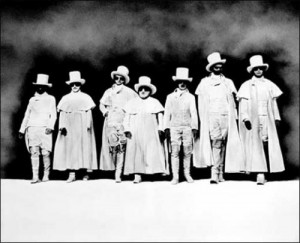 Hidden Forces? – “Painting“ in the 1960s and 1970s
Hidden Forces? – “Painting“ in the 1960s and 1970s
International Conference
Concept: Eva Ehninger (Institut für Kunstgeschichte der Universität
Bern), Henning Engelke (Kunstgeschichtliches Institut der Johann
Wolfgang Goethe-Universität Frankfurt am Main), Antje Krause-Wahl
(Kunsthochschule Mainz an der Johannes Gutenberg-Universität Mainz)
Art history and art criticism have established a narration of sudden
breaking points for the US-American artistic production since the
1960s: during the 1960s, so the story goes, artists turned away from
painting to concentrate on conceptual approaches, performance, video,
film, installation, etc. A decade later, at the beginning of the 1980s,
they returned to traditional methods of painting at least in part for
commercial reasons. This narration, which has been presented most
prominently by critics associated with the journal October, has
resulted in the fact that both scholarly and critical analyses of the
role of painting for the art of the 1960s and 1970s are all but
non-existent.
Our research project takes its cue from Helmut Draxler, who considers
the medium of painting as a “Dispositiv” – an arrangement of premises –
which becomes most prominent in those areas of art whose main aim is to
distinguish themselves from painting. Thus, artists who often openly
reject oil paint and canvas and with their choices of media seem to
move beyond the realm of painting actually still grapple with questions
that have originated in a modernist self-reflexion of the
picture-panel: the breaking down of central perspective and a singular
point of view; the framing of processes of production as well as
processes of perception; the subsequent reintegration of fiction,
illusion and narration.
As of now it has also generally been disregarded that a number of these
artists, who are considered representatives of avant-gardist movements
like Land Art, Installation or Performance, have actually never stopped
painting. The fact that they have worked simultaneously in both media,
which informed and influenced each other, might be symptomatic of the
strength of the underlying “Dispositiv”. Similarly, artists such as
Michael Snow, Tony Conrad or Robert Breer reflect the medium of film
from the perspective of painting.
In studying the “Dispositiv” of painting within American art of the
1960s and 1970s, we would like to initiate a rethinking of art
historical accounts of these decades. We aim to discuss the immense
variety of artistic media and forms from the perspective of painting –
not by reapplying a restrictive Greenbergian definition of painting but
by discussing the terms and terminology of painting instead.
Questions to be discussed:
How do contemporary discourses of the 1960s discuss painting?
What are the interests behind the rhetorical rejection of the medium of
painting?
How are painterly discourses integrated into minimalist, conceptual,
performative, installation or film practices?
How does painting communicate with the moving image, with media of
image transfer or the technological production of images?
Based on these considerations, how may the return to painting
propagated at the beginning of the 1980s be reappraised?
The two-day conference will take place at the MMK Museum für Moderne
Kunst Frankfurt am Main. The MMK Collection of art from the 1960s and
1970s gives a rich background to the topic of the conference and
includes a number artists that might be at the center of the papers and
discussions (Walter De Maria, Bill Bollinger, Lee Lozano, Jo Baer).
Please send an abstract of your proposal (300-500 words) together with a
short CV to
Antje Krause-Wahl: krausewa@uni-mainz.de
Travel expenses and accommodation will be covered. A publication
related to the conference proceedings is scheduled.
The deadline for submission is November 15st, 2012.
The conference is supported by the Terra Foundation of American Art.
source : http://arthist.net
contact : krausewa[at]uni-mainz[point]de

Leave a Reply
You must be logged in to post a comment.